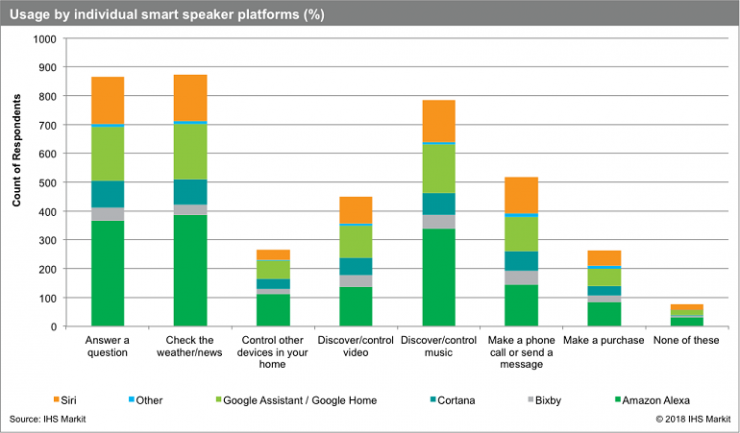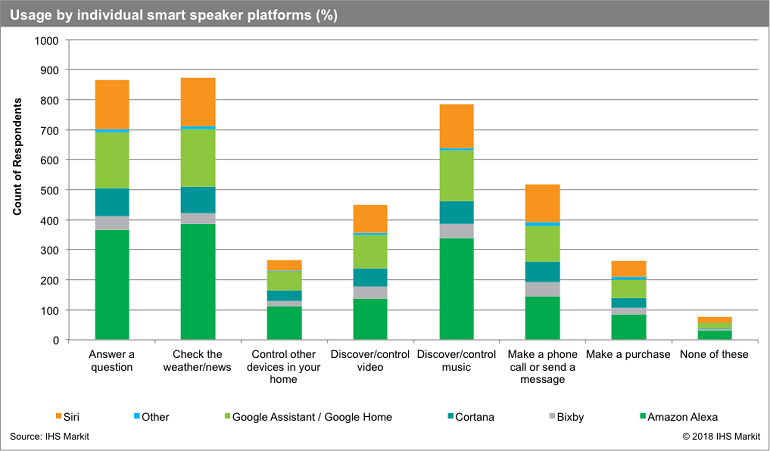Survey suggests most common uses.
A consumer survey has revealed that only 6% of consumers used a smart speaker to control other connected devices in their homes.
Conducted by IHS Markit in the US, UK, Japan, Germany and Brazil the survey showed the use of smart speakers revolved around asking questions, checking the weather, listening to news and playing music.
About 65% of survey respondents used their smart speakers for these functions in March and April of 2018, while only 6% reported using a smart speaker to control lights, televisions and other connected devices in their homes. When it comes to controlling connected home devices, Amazon Alexa was the most widely used voice assistant, by a margin of 5% over Google Home, with 40% of respondents owning an Amazon Alexa device and 23% owning a Google Home device, while 20% reported owning both.
Controlling smart home devices by voice currently represents only a small fraction of total smart-speaker interactions, principal analyst, smart home, Blake Kozak said. “This category will continue to trend upward as more video-streaming devices come to rely on voice control, as security alarm systems adopt voice control to arm and disarm, and as more builders embed smart devices throughout new homes,” he said.
Globally, there are more than 900 smart home device makers offering about 4,100 connected devices at the start of 2018, according to IHS Markit. Although hubs and smartphones have traditionally been the lynchpins of the smart home, voice control via smart speakers will soon eclipse these methods. “While devices like thermostats, connected appliances and door locks are important in their own rights, smart speakers will ultimately be the primary disruptor for smart home deployments, and the means by which consumers interact with all other devices,” Kozak said.

Despite the low use of smart speakers with other connected devices, it is only a matter of time before more connected devices permeate homes and voice assistants become the primary means of interaction with additional penetration of connected devices driven by streaming devices, such as the new Fire TV Cube, and other agnostic speakers, like the Sonos Beam.
“To increase the number of consumers using smart speakers to control connected devices in the home, voice assistants will need to follow a path similar to the one taken by the Amazon Echo Plus, which comes with the ability to directly control low-power wireless devices, such as switches and plugs connected to ZigBee and Z-Wave,” Kozak said.
Insurance companies will also play a role in educating consumers about connected devices, although the insurance industry will mostly focus on water leak detection. IHS Markit estimated that by the end of 2018, more than one million home policies across North America will include at least one connected home device, most likely water-leak sensors, flow detectors or shutoff valves. There will be about 450,000 smart speakers connected to insurance companies by end of this year.
“What has made the smart home market unique, and why growth is inevitable, has been the continued resourcefulness around strategic inflection points,” Kozak said. “When it appears smart home growth could be stalling, new device makers inject optimism. At the same time vertical markets, like the insurance industry, are modifying decades-old practices, to bring smart home technologies to the masses.”

